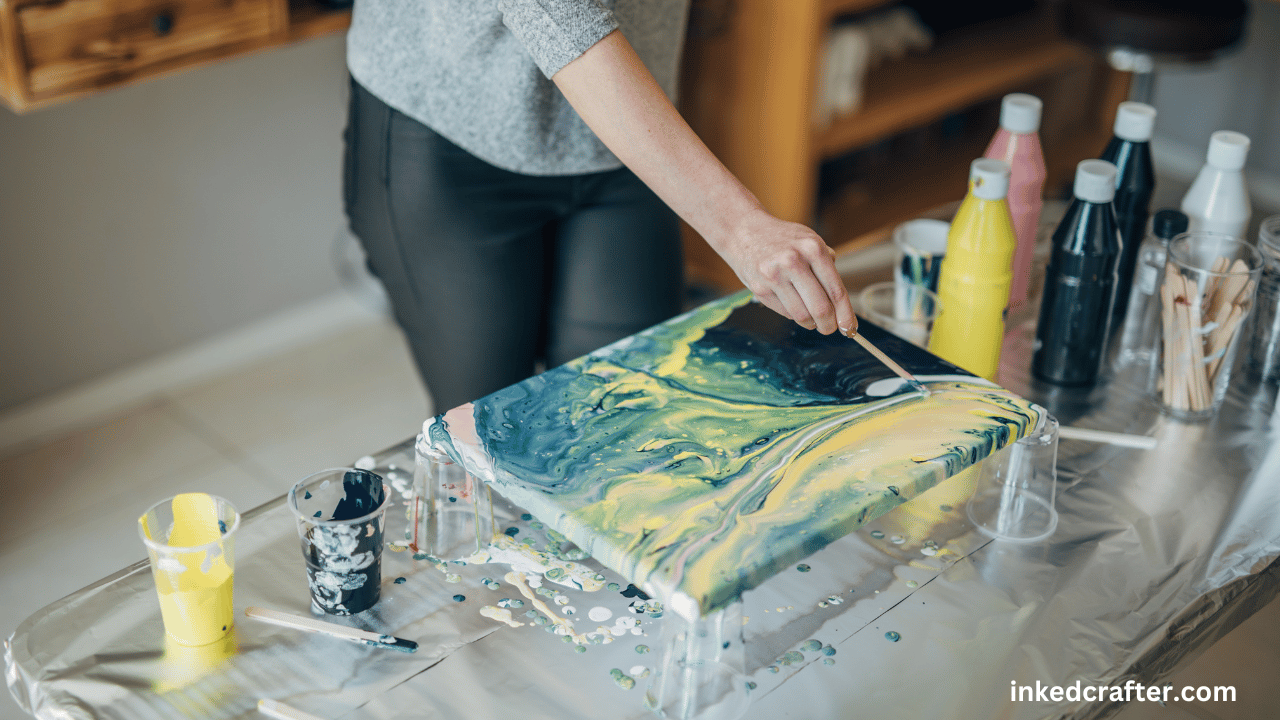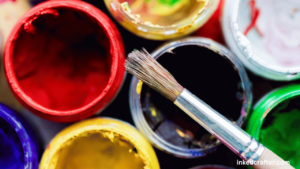Have you ever thought about painting metal with acrylic paint? You’re not the only one! A lot of people want to know if acrylic paint can stick to metal and how to make it work well. We’re going to look into the world of artistic science in this piece to find the answer to this common question.

Contents
- 1 Understanding Acrylic Paint
- 2 Properties of Metal Surfaces
- 3 Adhesion Techniques
- 4 Surface Preparation
- 5 Choosing the Right Acrylic Paint
- 6 Applying Acrylic Paint on Metal
- 7 Drying and Curing Process
- 8 Sealing the Deal: Varnishing
- 9 Common Challenges and Solutions
- 10 10 Practical Tips for Using Acrylic Paint on Metal Surfaces
- 11 Conclusion
- 12 FAQs
Understanding Acrylic Paint
Acrylic paint can be used for many things and is known for drying quickly and having bright colors. Acrylic paint doesn’t use a drying oil as a binding like oil paint does; instead, it uses acrylic polymer emulsion. Because of its unique makeup, acrylic paint sticks well to many objects, such as paper, wood, plastic, and even metal!
Properties of Metal Surfaces
When it comes to painting, metal surfaces are a little tricky. Metallic surfaces don’t have pores like cloth or wood do, so paint doesn’t stick to them as well. Also, metal surfaces may have dirt, grime, or rust on them that can make paint not stick well if they are not properly cleaned.
Adhesion Techniques
There are a number of ways to make sure that acrylic paint sticks to metal properly. Some of these are using sandpaper to make the surface rough to add texture, a metal base made just for acrylic paints, or a binding booster to help the paint stick better.
Surface Preparation
The key to painting on metal is getting the surface ready correctly. It’s important to clean the metal surface well to get rid of any dirt, oil, or rust before painting it with acrylic paint. Priming the surface with the right primer can also help the paint stick better and last longer.
Choosing the Right Acrylic Paint
Not all acrylic paints are created equal, especially when it comes to painting on metal. Opt for high-quality acrylic paints formulated for use on metal surfaces. These paints typically contain additives that enhance adhesion and provide better coverage and durability.

Applying Acrylic Paint on Metal
When applying acrylic paint to metal, use thin, even coats to achieve optimal coverage. Avoid applying thick layers of paint, as this can lead to uneven drying and poor adhesion. Additionally, consider using a brush or roller specifically designed for acrylic paints to ensure smooth application.
Drying and Curing Process
After painting, allow the acrylic paint to dry completely before handling or further treatment. Depending on environmental conditions, acrylic paint typically dries to the touch within minutes to hours. However, full curing may take up to several days or weeks, during which the paint reaches its maximum hardness and durability.
Sealing the Deal: Varnishing
To protect the painted metal surface and enhance its longevity, consider applying a clear acrylic varnish or sealer. Varnishing not only adds a protective layer but also enhances the colors and finish of the paint, giving your artwork a professional look.
Common Challenges and Solutions
Even if painters do everything right, they might have trouble when they try to paint metal with acrylic paint. A lot of the time, paint doesn’t stick well, cracks, or peels. To fix these issues, make sure the surface is ready, use good materials, and think about getting help from artists who have done this before.
10 Practical Tips for Using Acrylic Paint on Metal Surfaces
Prepare the Surface: Make sure the metal is clean and free of dust, rust, and grease before you paint it. Clean it well with a degreaser or mild soap, and then let it dry fully.
Prime the Surface: Use a primer that is made especially for metal surfaces. This makes it easier for the paint to stick and makes it last longer. For the best results, use a base that works with acrylic paint.
Choose Good Paint: Spend your money on good acrylic paints that are made to be used on metal. Most of the time, these paints stick better and last longer than cheap names.
Use Thin Coats: Instead of thick layers, use thin coats of acrylic paint. Thin coats dry more evenly and help keep paint from running and leaving streaks. Wait until the last coat is fully dry before adding the next one.
Use an Acrylic Paint Brush or Roller: Use an acrylic paint brush or roller that is made for painting metal. When painting with acrylics, synthetic brushes are often suggested since they clean up more easily and don’t soak up as much paint.
Avoid Using Too Much Water: Acrylic paint can dissolve in water, but using too much water can make the paint less thick and less likely to stick to the metal. Do not add too much water, especially if you are thinnining the paint to do glazing or washing.
Spray Painting: Instead of using a brush, you might want to use spray paint on big metal surfaces or patterns with a lot of small details. With little work, spray paint can give you a smooth, even finish.
Seal the Paint: After the acrylic paint has dried completely, you might want to use a clear sealer or finish to keep the painted surface safe from damage from UV rays, scratches, and rust. If you need to, choose a sealer that works with acrylic paint and can be used outside.
Allow Enough Time to Dry: Acrylic paint dries pretty quickly, but it’s important to give the metal surface enough time to dry between coats and before touching it. If you try to dry the paint too quickly, it could get smudged or even damaged.
Handle with Care: Once the paint is completely dry, be careful not to scratch or chip the painted metal surface when you touch it. Do not put it near strong chemicals or rough materials that could damage the paint finish.
Conclusion
If you use the right tools and steps, acrylic paint can stick to metal very well. You can be sure of making beautiful art on metal if you know how acrylic paint works on metal and know the right way to prepare and paint metal surfaces. Start painting and put your art on metal boards to show it off!
FAQs
-
Can I use acrylic paint on metal surfaces?
Yes, acrylic paint can be used on metal surfaces with proper preparation and techniques.
-
Do I need to prime metal before painting with acrylic?
Yes, priming the metal surface with a suitable primer is recommended to improve paint adhesion and durability.
-
How long does acrylic paint take to dry on metal?
Acrylic paint typically dries to the touch within minutes to hours, but full curing may take several days or weeks.
-
Can I apply varnish over acrylic paint on metal?
Yes, applying a clear acrylic varnish or sealer can protect the painted metal surface and enhance its longevity.
-
What are some common challenges when painting with acrylic on metal?
Common challenges include poor adhesion, cracking, or peeling of the paint, which can be addressed with proper surface preparation and high-quality materials.








